
High performance cars from the muscle-car era are sometimes restored well beyond the scope of practicality. Cars that carry a nameplate like Z/28 are even more likely to be placed on a pedestal, and no longer used for their intended purpose of going fast. For muscle cars, going fast usually meant in a straight line, but back in the 1990s, there were some enthusiastic gearheads who equipped their muscle cars with road race-style suspension and kept them street legal for a new mixture of extreme handling capability and highway manners. This build style got the name Pro Touring, and it has been inspiring creative muscle car builds ever since. The Pro Touring segment of the hobby is certainly the most active, as the cars are built to be used on the highway, as well as for autocross competition and road course duty, making them well-rounded and quite resilient when it comes to harsh driving conditions. The wicked Camaro on these pages is a fine example, as it’s been punished on the autocross course and driven thousands of miles in the blazing heat and continues to ask for more.
Chris German of Cleveland, Tennessee, built this 1970 Camaro Z/28 several years ago with the intention of creating a versatile combination that he could use and abuse regularly. His shop, American Muscle Rod Shop, has seen many Camaros pass through the doors, but Chris held off on his personal project for many years. In fact, he owned this car for 25 years before even starting on it.
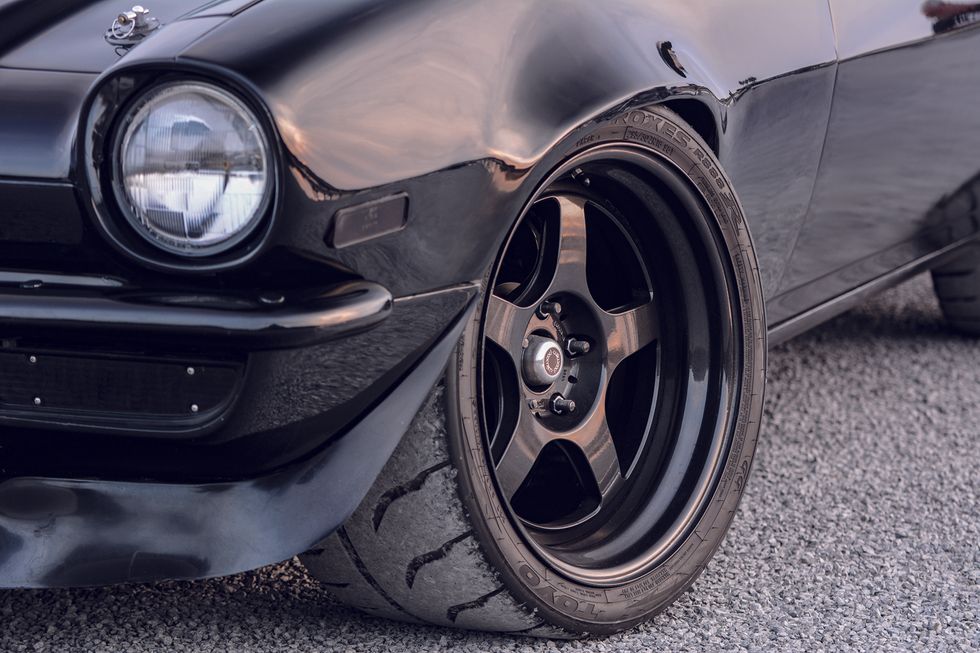
Photo: Tommy Lee Byrd
Chris remembers the Camaro from his younger days, as his cousin was the car’s original owner. He paid for it while serving in the Vietnam War, and when he returned home, it was time to start racing it. Despite the Z/28 suspension package, which was designed for handling corners, the car went into service as a drag car. Early on, the Z/28 ran in F/Stock, but later morphed into a more serious drag car with a custom paint job and the name “Delirious” lettered on the doors. After the drag racing days fizzled out, the car sat for a few years and Chris bought the shell for $750 in the mid-1980s. From there it became a back-burner project, just waiting for its time to be reborn.
The day finally came in 2014. Chris had worked on dozens of Camaros for customers and the itch to do something with his Camaro had to be scratched, so he pulled it into the shop and began a ground-up build. His main concerns for the car’s performance revolved around the suspension and handling package, but he also had some ideas for a smooth and reliable power source. Because of his experience with customer’s cars, he already knew a good recipe, so he stripped down the original front subframe and started building it back with tubular control arms and QA1 double-adjustable coilovers with hefty 850-pound-per-inch springs. A larger Hotchkis anti-sway bar helps keep the car level during hard cornering. He scrapped the stock steering box in favor of a quick-ratio box from a third-generation Camaro IROC-Z. Out back, Chris built a four-link rear suspension setup that would provide adjustability and the perfect amount of flexibility when combined with QA1 coilovers fitted 550-pound-per-inch springs.
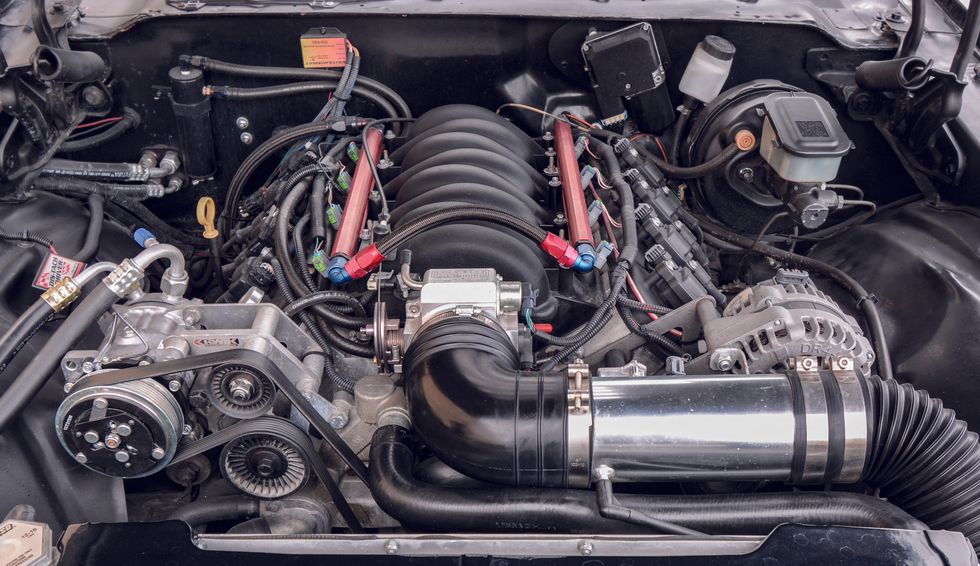
Photo: Tommy Lee Byrd
An important aspect in the handling package is a rigid chassis structure, so Chris tied the unit-body together with Detroit Speed subframe connectors. He also built a roll cage, which serves two purposes: providing safety in the event of a crash while also stiffening the chassis. Although the roll cage does have forward and rearward bars that connect into the frame rails, Chris opted to forgo conventional door bars for the sake of convenience when entering and exiting the car.
Next on the list was rolling stock. Chris wanted sticky tires that were DOT approved, and he wanted the widest possible wheel option for performance and the proper road-race appearance. He ordered a set of Formula 43 wheels, sized at 18 x 11.5 inches up front and 18 x 12.5 inches out back. The extra-wide wheels are wrapped in Toyo rubber, which are 295/30ZR18 and 335/30ZR18, respectively. To accommodate the larger tires and wheels, Chris flared the front fenders and widened the rear wheel tubs.
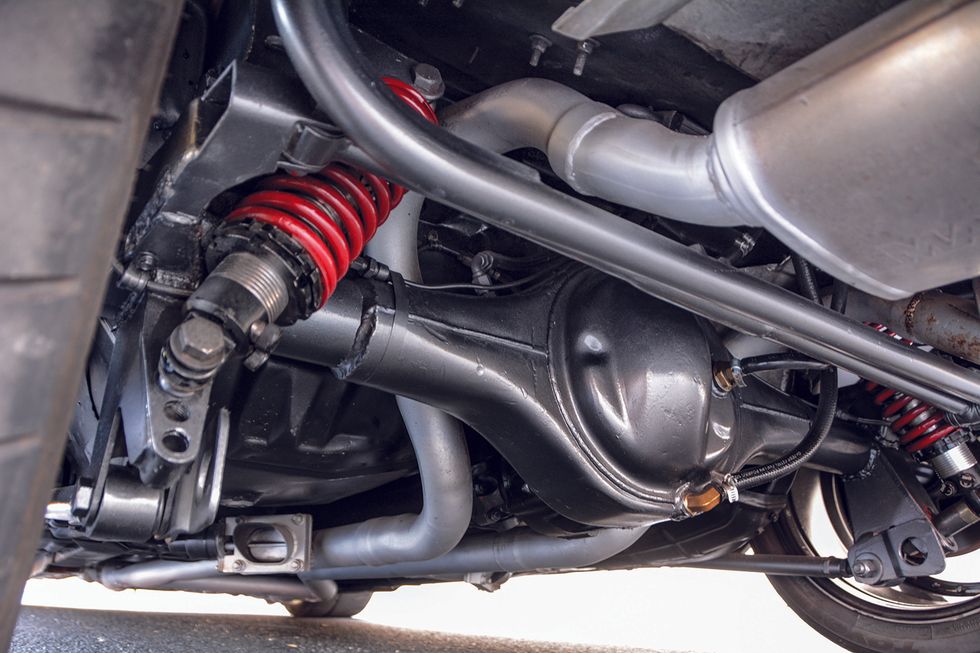
Photo: Tommy Lee Byrd
Braking power starts with a booster and master cylinder from Detroit Speed and makes its way to the four corners through custom brake lines. Chris went with Wilwood disc brakes, which feature 13-inch drilled and slotted and rotors up front, clamped by six-piston calipers. The rear brakes are slightly smaller Wilwood discs, coming in at 12 inches with four-piston calipers.
For horsepower, the most potent and practical combination was the GM LS3, an all-aluminum 6.2-liter (376-cu.in.) V-8 that produces 430 horsepower in stock form. Chris turned the LS3 up a few notches by increasing its displacement with a Callies stroker crankshaft, H-beam rods, and oversized pistons. The original stroke was 3.622 inches, but the new crankshaft features a four-inch stroke. He also enlarged the cylinders by .010-inch, going from 4.065 inches to 4.075 inches, which brings total displacement to 417 cubic inches. Lingenfelter massaged the cylinder heads to flow more air, while a Comp Cams roller camshaft provides the appropriate valve action to make use of the newfound airflow.
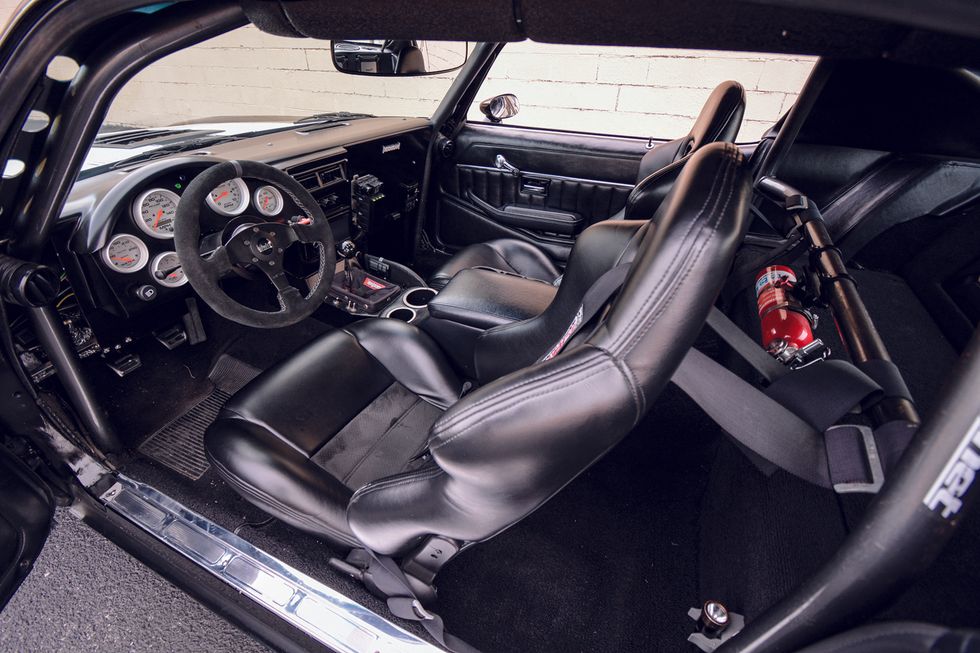
Photo: Tommy Lee Byrd
Fuel delivery is handled by dual Bosch electric fuel pumps, which are operated through an Aeromotive fuel management system and pull 93-octane gasoline out of the Summit Racing 20-gallon fuel cell. Chris added Aeromotive fuel rails and a FAST throttle body to the stock LS3 intake manifold. The factory GM ignition system is adequate for big time horsepower, so Chris kept it all stock. The exhaust system features Kooks stainless steel headers, which lead into 2-1/2-inch pipes with Magnaflow mufflers, and Chris has electric cut-outs if he wants to turn up the volume. The LS3 is kept cool with a Summit Racing aluminum radiator, equipped with dual electric fans. Vengeance Racing tuned the engine using EFI Live software and the car made 457 horsepower and 473 lb-ft of torque at the rear wheels.
All that horsepower is fed into a Tremec T-56 Magnum six-speed manual transmission, which was ordered as a direct bolt-in unit from American Powertrain. The six-speed features an excellent set of ratios, which includes two overdrive gears for awesome highway cruising. Hudlow Axle built the custom driveshaft and set up the rear end gears, which feature a 3.55:1 ratio. Chris crossed into Ford territory with a 9-inch rear end housing, sourced from an oval-track application. The floater housing has been narrowed to fit and features a Detroit TrueTrac differential and custom length axles from Hudlow. Thanks to the engine and gearing combination, the Camaro averages 14 miles per gallon.
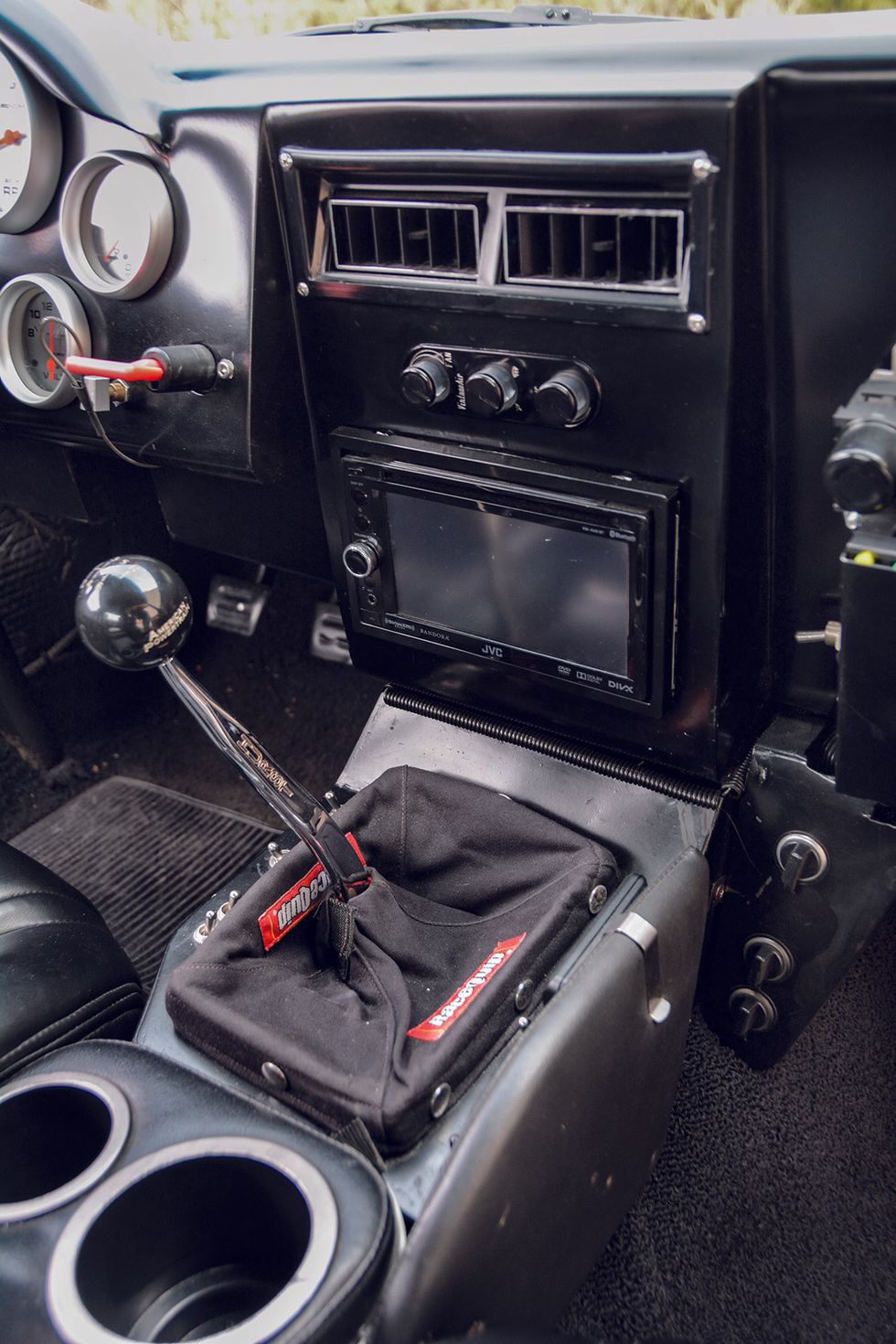
Photo: Tommy Lee Byrd
When it came time to address the exterior appearance of the car, Chris wanted a sinister look. Luckily, the car hadn’t been cut up badly during its time on the drag strip, and it hadn’t suffered from any major rust issues, so he had some decent sheetmetal to serve as a nice platform to build upon. No aftermarket body panels or patch panels were needed, which made for a relatively simple bodywork process during the car’s initial build. From 2014 until 2023, the car wore a satin black paint job, but Chris wanted to give it a fresh look, so he commissioned Jeff Kennedy to paint it glossy black with white stripes. All of the original trim, including the bumpers, are painted for a mean-looking, blacked-out appearance.
The interior offers more creature comforts than an original 1970 Camaro, and the Recaro racing seats provide a much better grip than stock buckets. G-Force five-point harnesses are tied into the roll cage and add extra security when the action gets a little more serious. Chris installed new carpet and door panels to finish out the all-black interior, but the cockpit is more about function than style. A custom dash holds an assortment of Auto Meter gauges, and it also holds the custom fuse block. Chris used a stock steering column but installed a quick-release steering wheel from Ididit. The car has Vintage Air heat and A/C, and a full stereo system, which consists of a JVC head unit, dual Pioneer amps and a custom speaker enclosure in the package tray area. An aftermarket console with cupholders is another practical detail that makes long road trips a little easier.
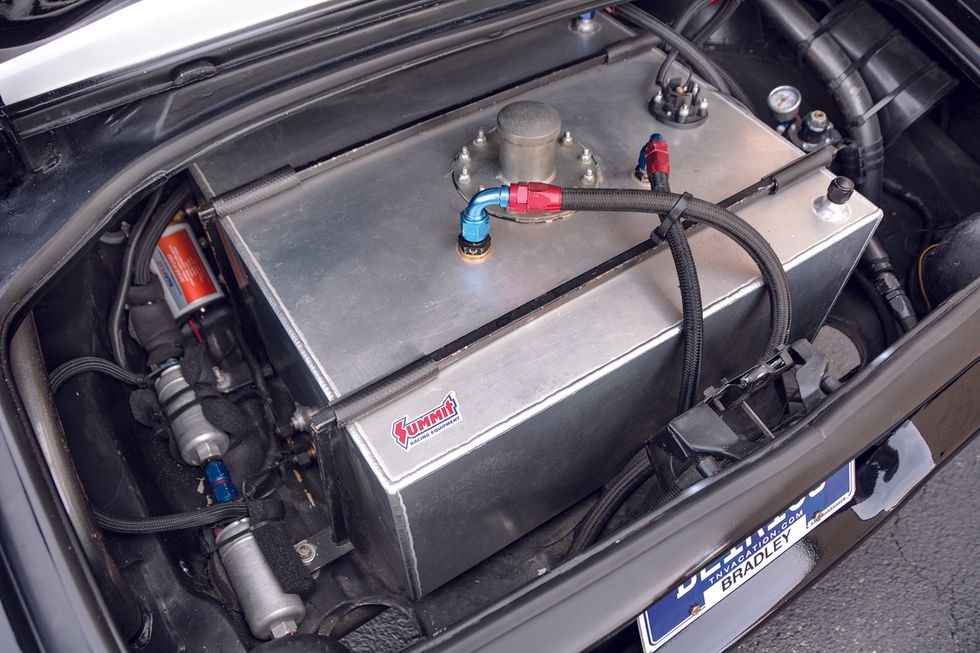
Photo: Tommy Lee Byrd
Since the car’s completion in 2014, Chris has driven it more than 20,000 miles. He’s participated at Holley LS Fest, Camaro Fest, and many others, typically driving the car to and from each event. Along with events, Chris often makes the short drive to the mountains, as he’s only an hour drive from the famous Tail of the Dragon, a winding mountain road that features 318 curves in 11 miles. Whether it’s spirited driving or just cruising down the highway, this well-equipped Camaro is ready for action, and it proves that these cars are more than just a conversation piece when they’re built to handle the rigors of regular beatings.
Specifications – 1970 Chevrolet Camaro Z28
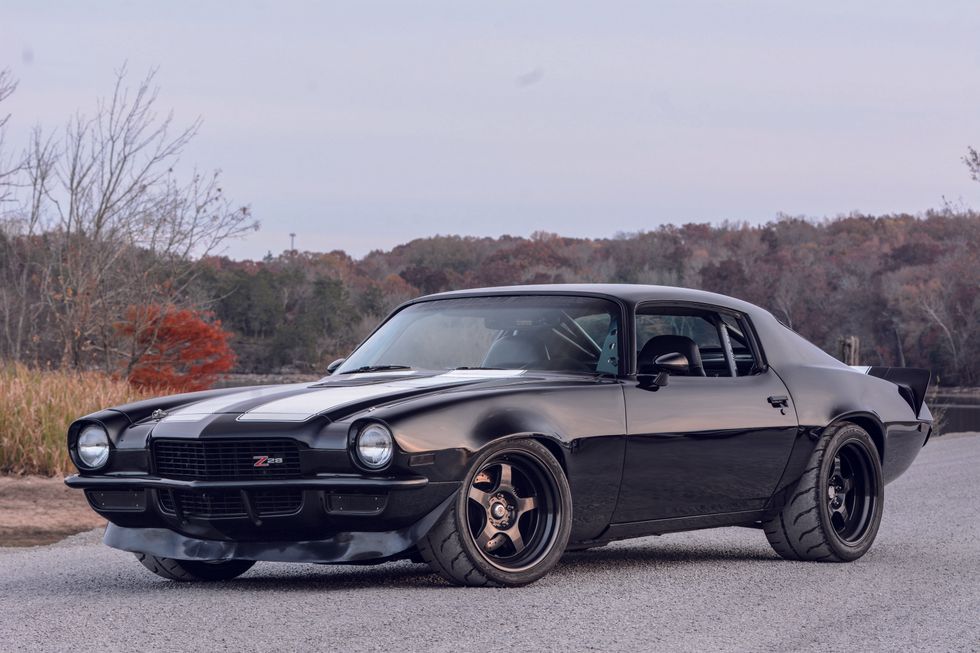
ENGINE
Block type: GM LS3 OHV V-8, aluminum
Cylinder heads: Lingenfelter LS3, 275cc intake runners, 2.165/1.59-inch valves
Displacement: 417 cu.in.
Bore x stroke: 4.075 x 4.00 in
Compression ratio: 11.5:1
Horsepower @ rpm: 457 @ 6,500 rpm (at the wheels)
Torque @ rpm: 473 lb-ft @ 4,600 rpm (at the wheels)
Camshaft: Comp Cams hydraulic roller
Duration: 277/283 degrees duration, intake/exhaust (adv.)
Lift : .632/.619-inch, intake/exhaust
Valvetrain: GM LS7 lifters, Comp Cams valve springs
Induction system: Stock GM LS3 intake manifold with FAST Big Mouth throttle body
Ignition system: Stock GM coil packs
Lubrication system: Stock with Holley oil pan
Exhaust system: Kooks headers, 2.5-inch exhaust with Magnaflow mufflers
Original engine: Chevrolet LT-1 350-cu.in. “small-block” V-8
TRANSMISSION
Type: Tremec T-56 Magnum six-speed manual by American Powertrain, LS7 clutch
Ratios: 1st/2.66:1 … 2nd/1.78:1 … 3rd/1.30:1 … 4th/1.00 … 5th/0.80 … 6th/0.63 … Reverse/2.90:1
DIFFERENTIAL
Type: Ford 9-inch NASCAR housing, floater style, Detroit True Trac differential
Ratio: 3.55:1
STEERING
Type: IROC-Z Camaro recirculating-ball steering box, power assist
Ratio: 12.7:1
BRAKES
Type: Hydraulic four-wheel disc
Front: Wilwood 13-inch rotors, Wilwood six-piston calipers
Rear: Wilwood 12-inch rotors, Wilwood four-piston calipers
SUSPENSION
Front: Tubular control arms, QA1 double adjustable coilovers with 850-lb springs, Hotchkis anti-sway bar
Rear: Owner-fabricated four-link suspension with QA1 double adjustable coilovers with 550-lb springs
WHEELS & TIRES
Wheels: Forged Aluminum
Front: 18 x 11.5 inches
Rear: 18 x 12.5 inches
Tires:
Front: Toyo Proxes R888, 295/30ZR18
Rear: Toyo Proxes R888, 335/30ZR18
PRODUCTION
Chevrolet built 124,901 Camaros in 1970 and 8,733 featured the Z/28 package.
PERFORMANCE*
0-60 mph: 5.8 sec*
¼-mile ET: 14.2 sec @ 100.3 mph*
*Source: May 1970 Car & Driver test of a 1970 Chevrolet Camaro Z/28 equipped with the 350ci/360hp small block V8 with three-speed automatic transmission.
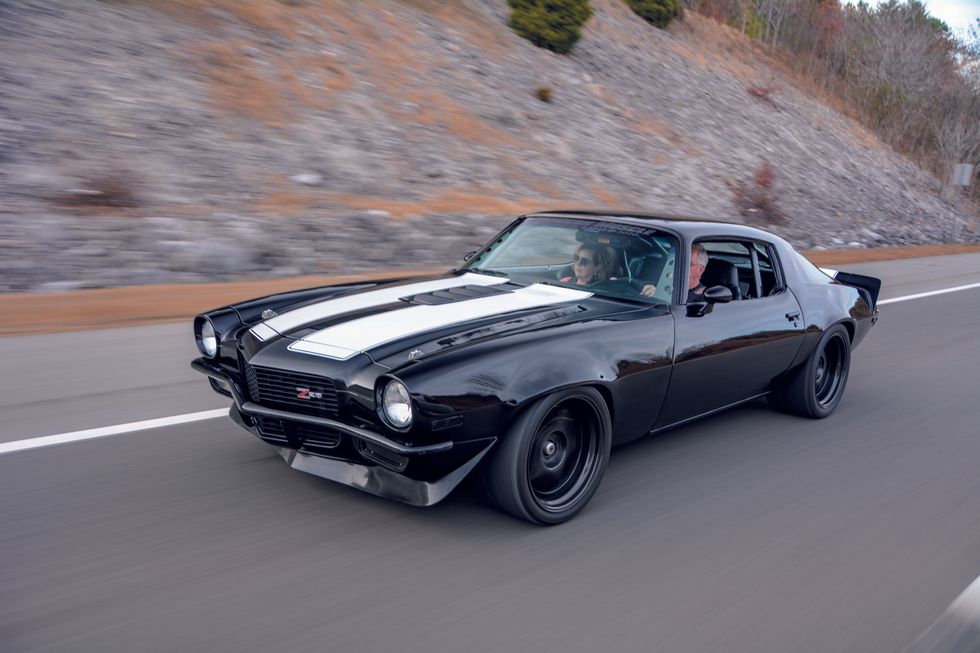
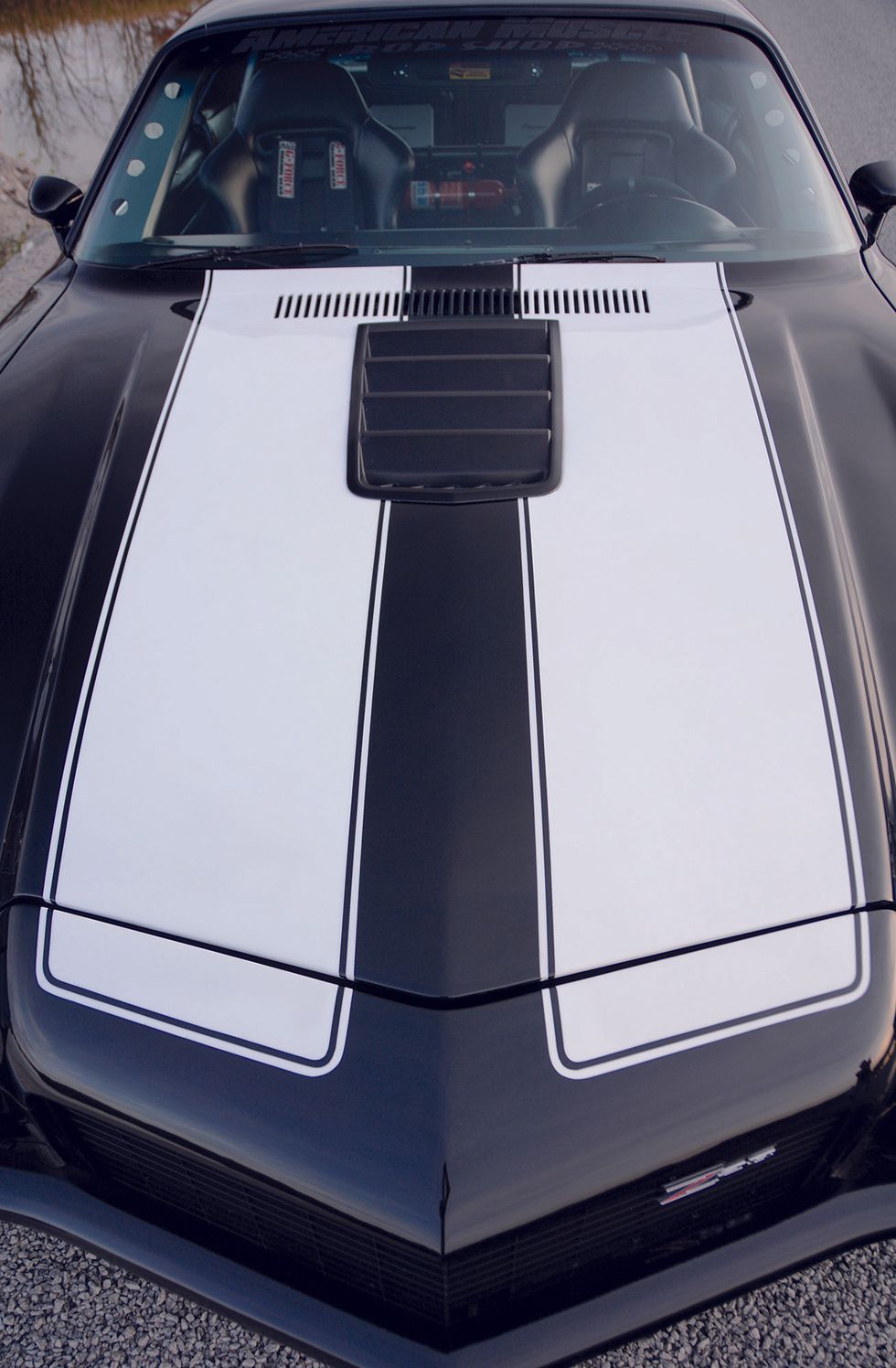
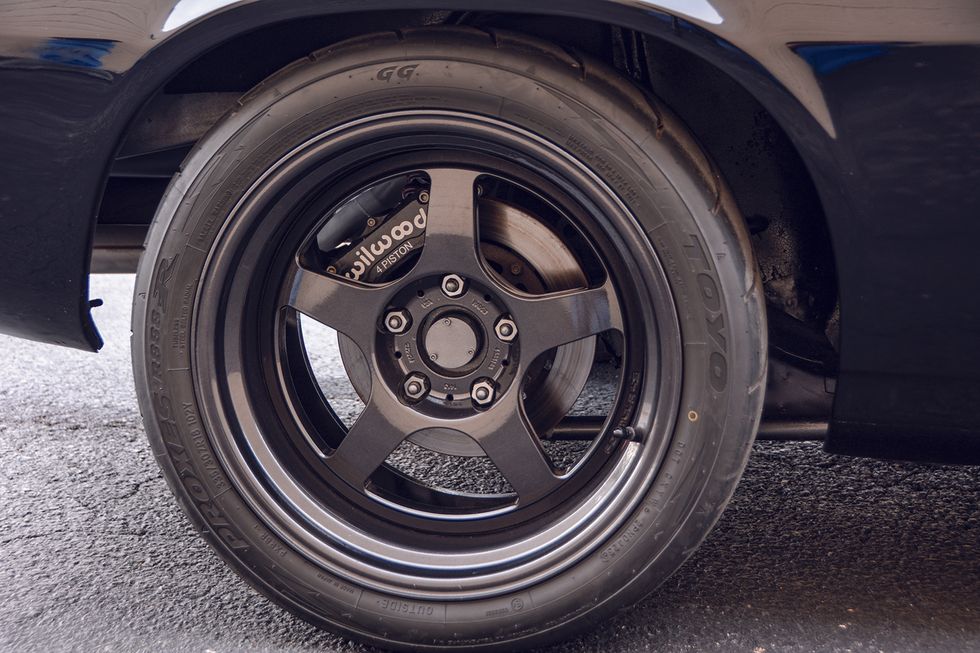
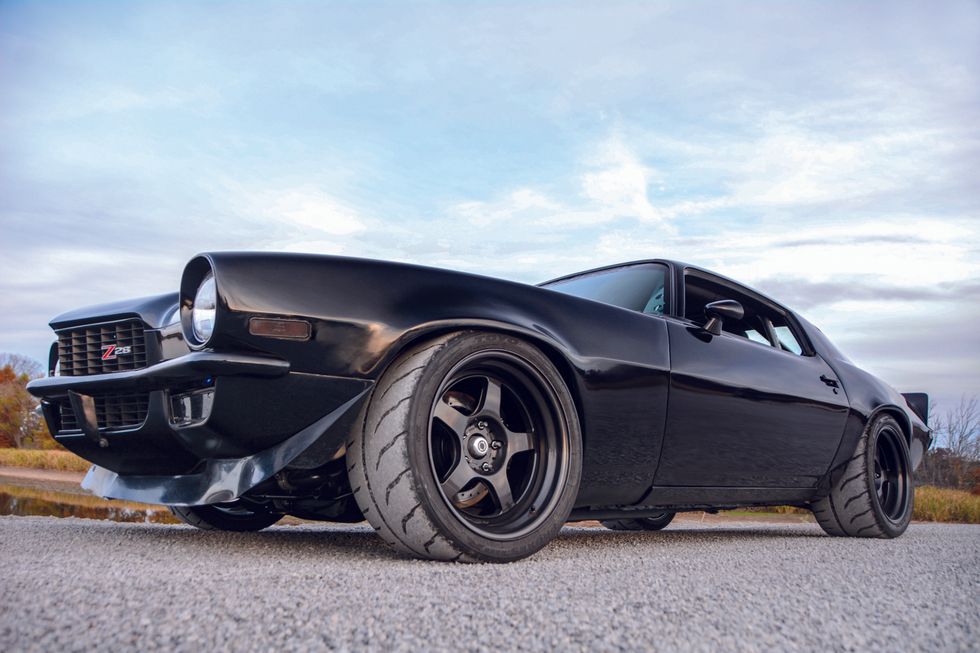
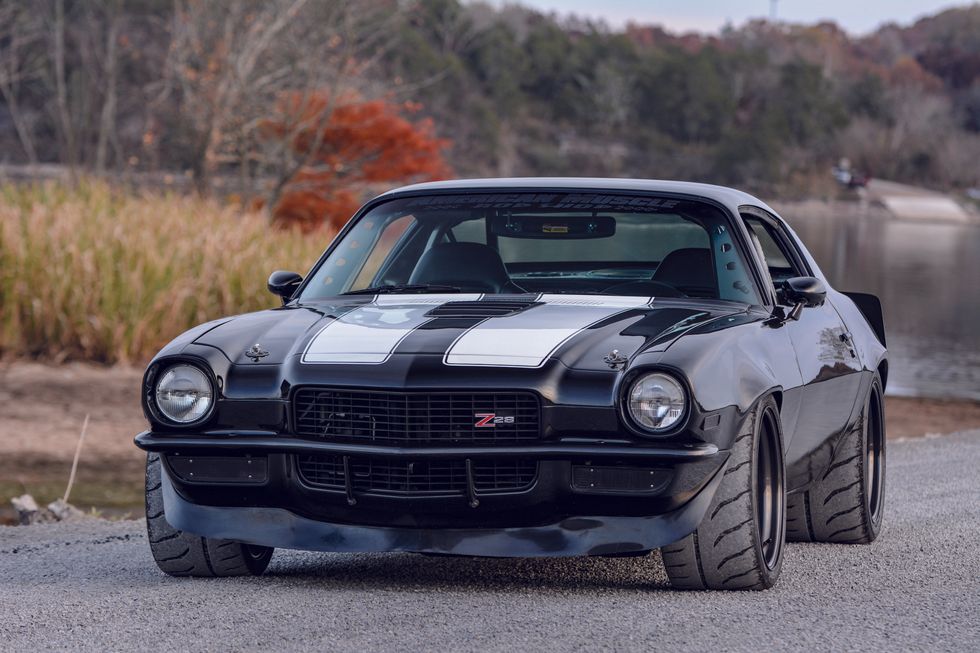
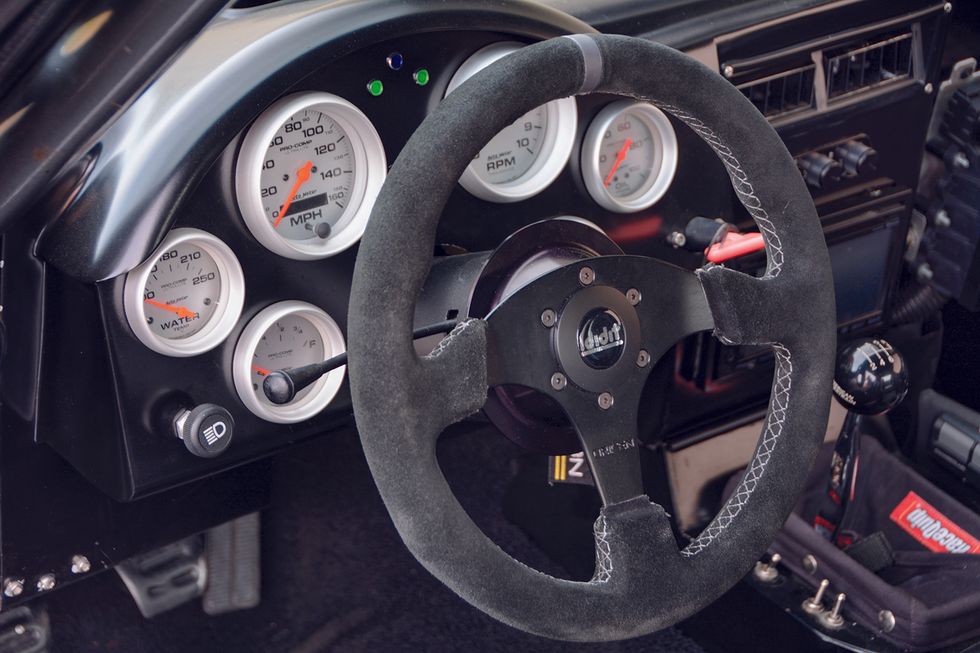
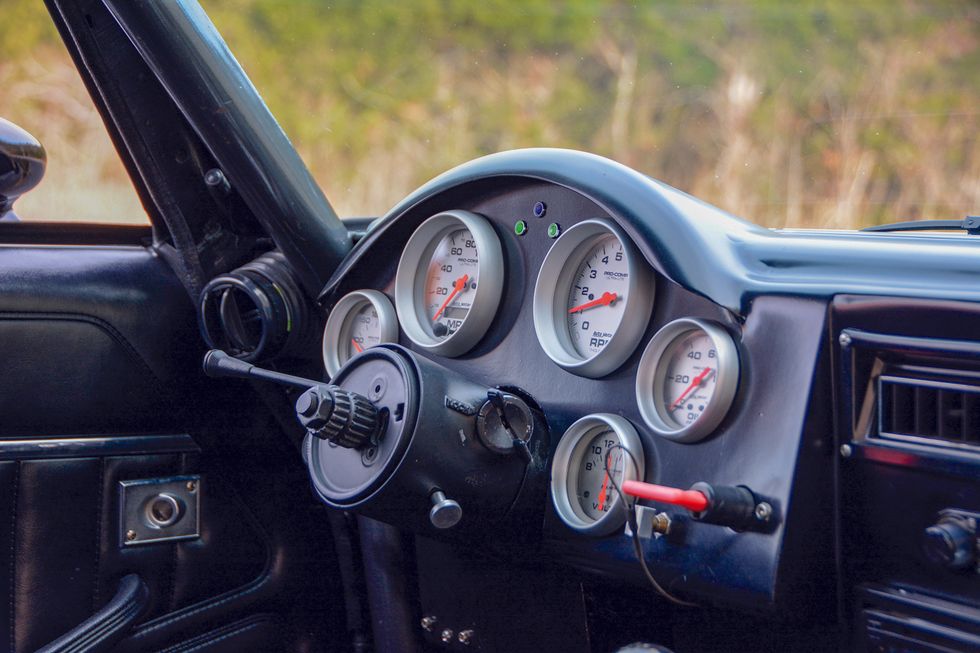
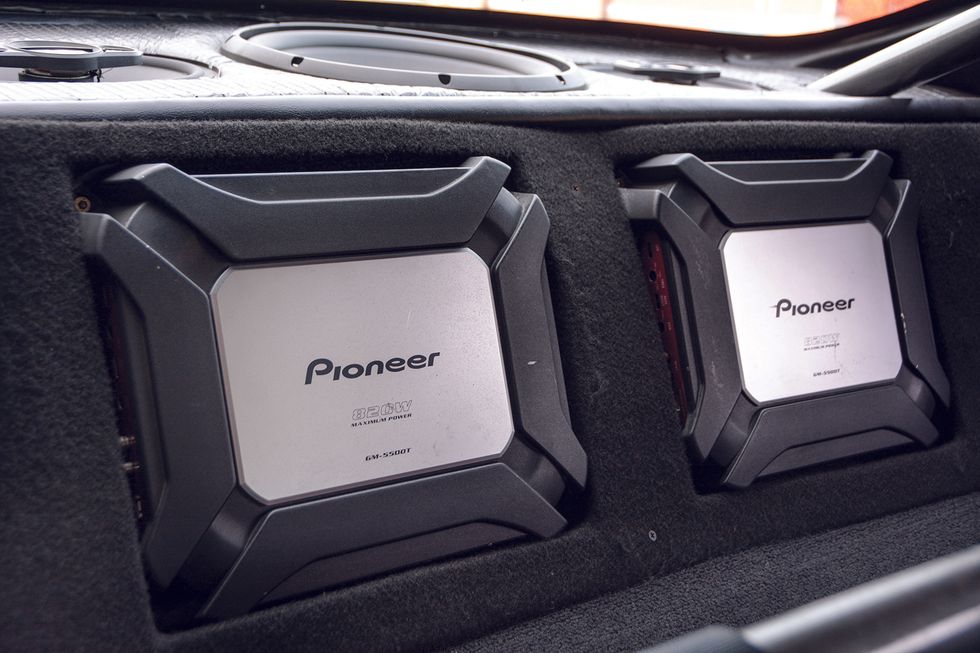
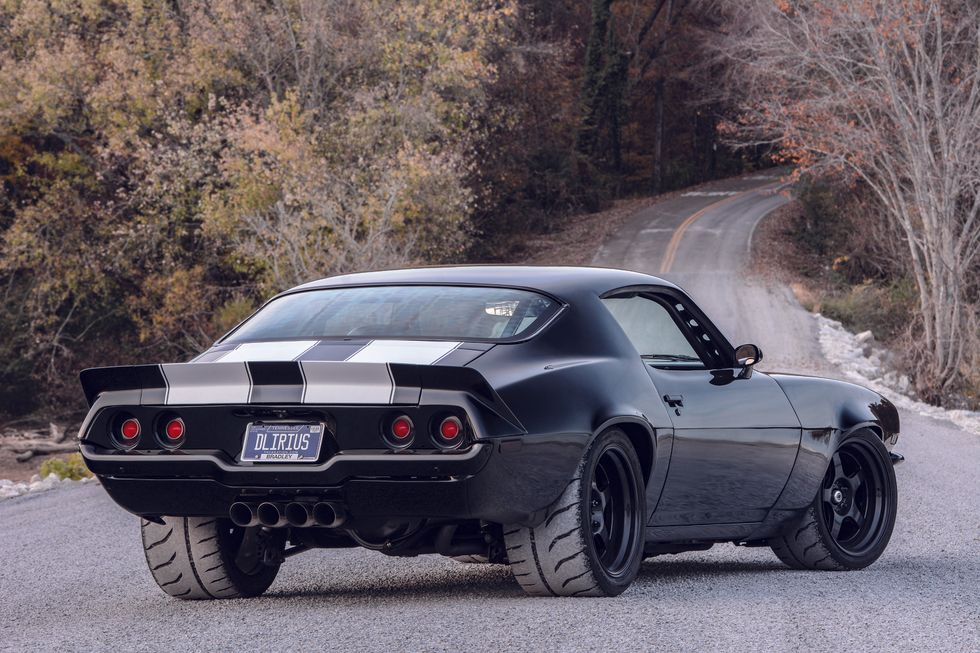
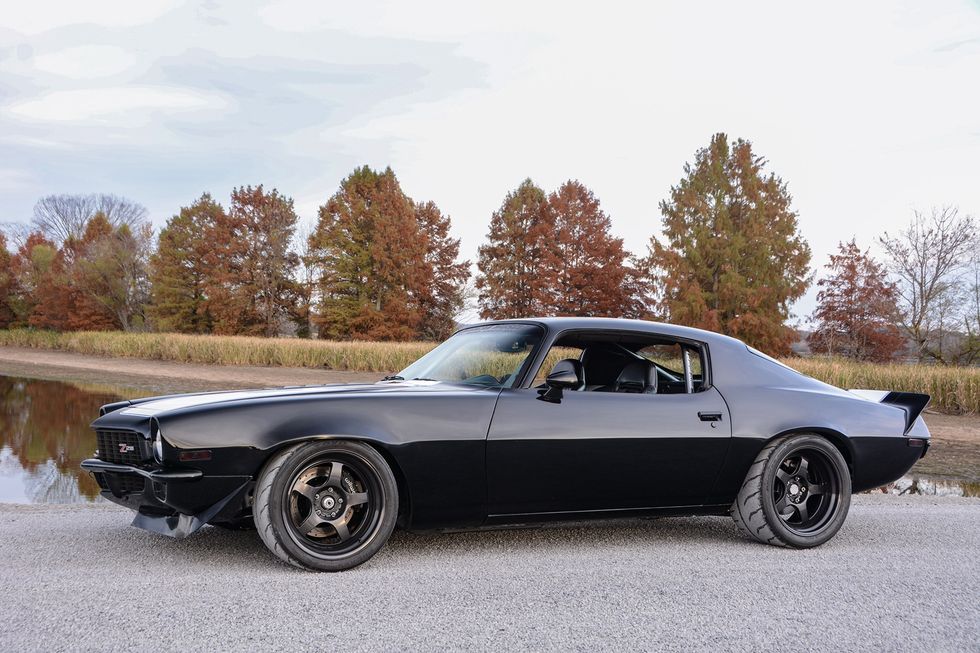
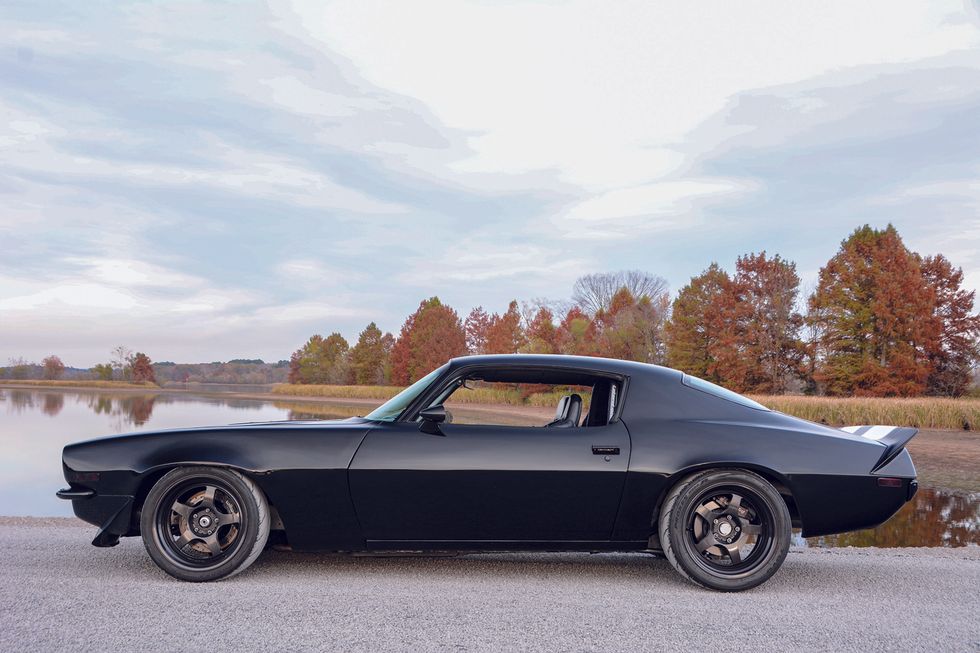
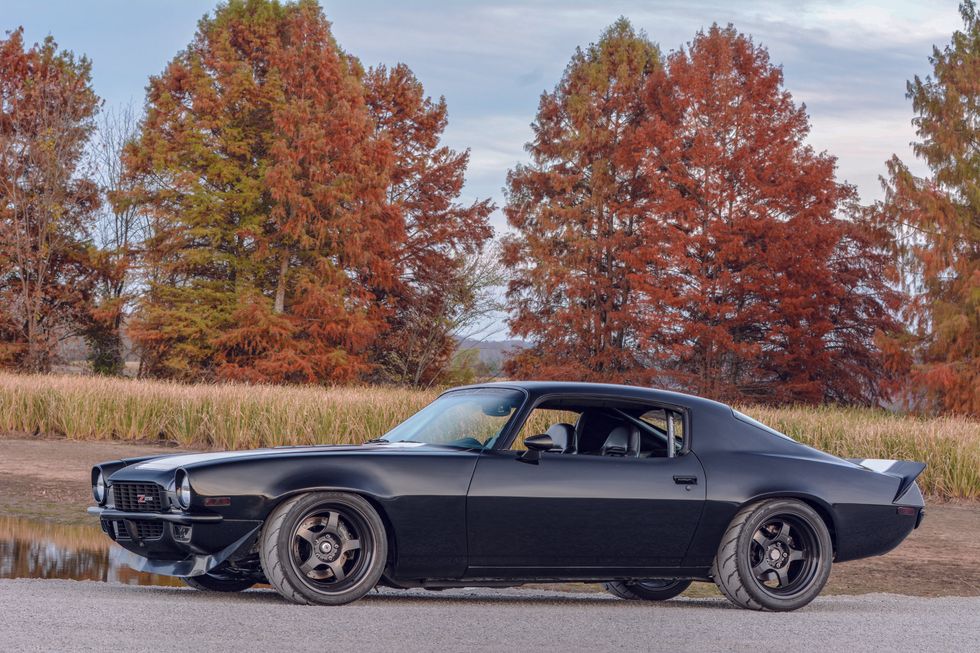
Commercials Cooperation Advertisements:
(1) IT Teacher IT Freelance

立刻註冊及報名電腦補習課程吧!
电子计算机 -教育 -IT 電腦班” ( IT電腦補習 ) 提供一個方便的电子计算机 教育平台, 為大家配對信息技术, 電腦 老師, IT freelance 和 programming expert. 讓大家方便地就能找到合適的電腦補習, 電腦班, 家教, 私人老師.
We are a education and information platform which you can find a IT private tutorial teacher or freelance.
Also we provide different information about information technology, Computer, programming, mobile, Android, apple, game, movie, anime, animation…
(2) ITSec

www.ITSeceu.uk
Secure Your Computers from Cyber Threats and mitigate risks with professional services to defend Hackers.
ITSec provide IT Security and Compliance Services, including IT Compliance Services, Risk Assessment, IT Audit, Security Assessment and Audit, ISO 27001 Consulting and Certification, GDPR Compliance Services, Privacy Impact Assessment (PIA), Penetration test, Ethical Hacking, Vulnerabilities scan, IT Consulting, Data Privacy Consulting, Data Protection Services, Information Security Consulting, Cyber Security Consulting, Network Security Audit, Security Awareness Training.
Contact us right away.
Email (Prefer using email to contact us):
SalesExecutive@ITSec.vip